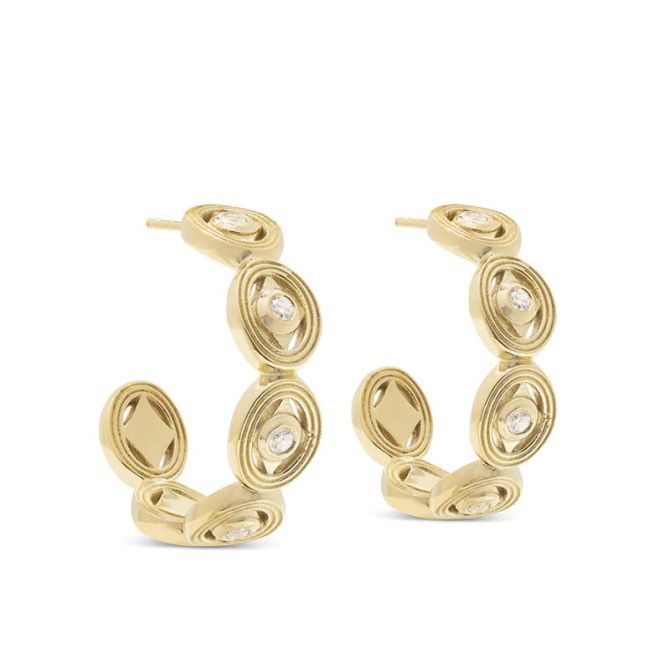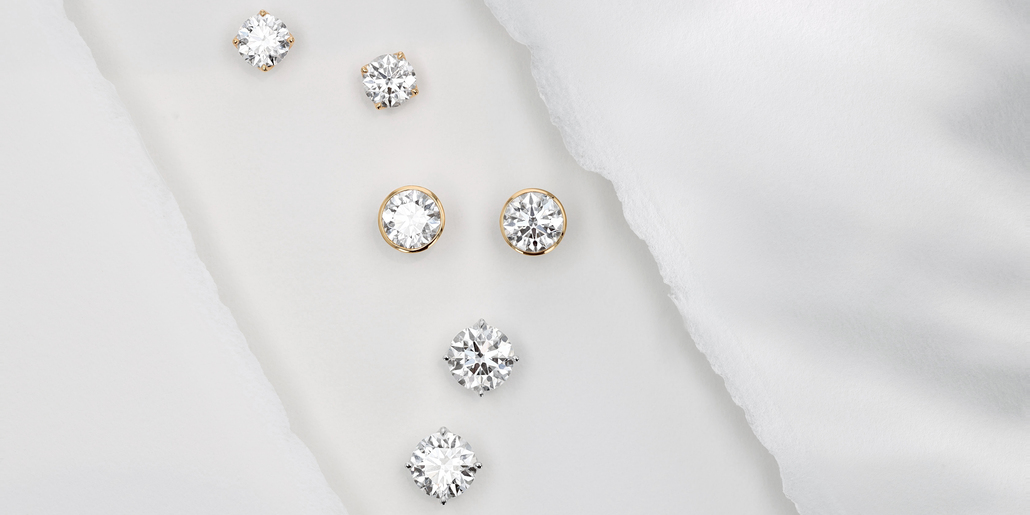Diamonds and cubic zirconia may share a similar shimmer, but that’s where the similarities end. Here’s how to tell the difference between the two and choose the stone that best fits your style and needs.

What Is Cubic Zirconia?
Cubic zirconia, or CZ, is a lab-created gemstone made from zirconium dioxide, designed to look like a diamond. While zirconium dioxide exists in nature, it’s extremely rare and unsuitable for jewelry, so all CZ is produced synthetically. This controlled process allows manufacturers to create flawless, colorless stones with consistent brilliance. First perfected in the 1970s, cubic zirconia quickly became popular in fashion jewelry for its affordability and diamond-like sparkle.
At first glance, high-quality cubic zirconia can look just like a diamond, but closer inspection reveals key differences. Keep reading to see what sets them apart.
Key Differences Between Diamond and Cubic Zirconia
Cubic Zirconia vs Diamond Sparkle
Both diamonds and cubic zirconia are admired for their shine, but the way they sparkle is different. Diamonds display a distinct combination of brilliance and fire that gives them a lively, multidimensional sparkle. Cubic zirconia, on the other hand, has a higher dispersion rate, which produces more rainbow-like flashes, sometimes creating a “disco-ball” effect. While CZ stones are typically flawless and perfectly clear, some find their sparkle less natural compared to genuine diamonds.
In terms of clarity, natural diamonds may contain inclusions whereas CZ is always flawless, which, to some, can appear almost too perfect.
Color is another key distinction. Diamonds are graded from D (colorless) to Z (light yellow or brown), with truly colorless stones being the rarest and most valuable. Cubic zirconia is generally colorless but can be manufactured in virtually any hue.
Cubic Zirconia vs Diamond Weight
Weight and feel are notable too. Cubic zirconia is about 75% heavier than a diamond of the same size, giving it a denser, weightier feel in jewelry.
Cubic Zirconia vs Diamond Strength
When it comes to durability, diamonds reign supreme. Ranking a 10 on the Mohs hardness scale, they’re the hardest known natural material, making them ideal for daily wear, especially in engagement rings. Cubic zirconia, on the other hand, rates around 8 to 8.5 on the Mohs hardness scale, meaning it’s still quite durable but can be more prone to scratches, chips and cloudiness over time, especially with daily wear. For this reason, it’s ideal for fashion pieces rather than heirloom-quality jewelry.
Cubic Zirconia vs Diamond Price
The most significant difference between cubic zirconia and diamonds is price. Diamonds—whether natural or lab-grown—command a much higher cost, reflecting their natural rarity and long-standing value.
A one-carat diamond can range from thousands to tens of thousands of dollars, depending on its quality. In contrast, cubic zirconia of comparable size (about a one-carat diamond equivalent) might cost less than $50.
How to Clean Cubic Zirconia and Diamond
To keep both diamonds and cubic zirconia looking their best:
- Clean them regularly using a soft brush, warm water and mild soap.
- Avoid harsh chemicals or ultrasonic cleaners when caring for cubic zirconia.
- Store pieces separately to prevent scratches.
No matter which stone you choose, the key is to find what makes you happiest, fits your budget and suits how you plan to wear it. Both have their place in a jewelry collection, offering beauty for every style and occasion.

